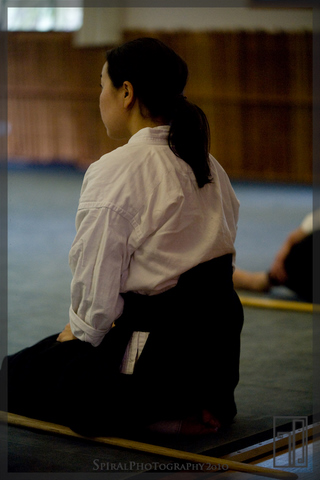Shukan News 29th August
Griffith Aikido Brisbane
If you have any contribution for the Shukan News (story, photograph, video), please send it via email to gary@garyweigh.com
1. Eri is a Mum
 Congratulations to Eri who gave birth to a beautiful baby boy, Ethan Martin, last Monday at 4.30pm. We are told that both Mother and child are doing well, and Dad Michael is holding up ok too.
Congratulations to Eri who gave birth to a beautiful baby boy, Ethan Martin, last Monday at 4.30pm. We are told that both Mother and child are doing well, and Dad Michael is holding up ok too.
Eri is one of our seniors who trained with us for several years. We are hoping that she brings Ethan in soon to show us. We also look forward to seeing Eri back on the mat sometime in the future.
We extend our best wishes to Eri and Michael. Why stop at one?
2. Who were the Samurai?
Samurai in armour, 1860s. Hand-coloured photograph by Felice Beato.
The samurai were an elite class of medieval Japanese warrior. Their code of honour, known as Bushido, was based on the principle of self respect and absolute loyalty to the master they served. It was their way of life.
The samurai originated as servants of the emperor, probably as early as the 8th century. They served as palace guards and upheld the emperor’s authority in the provinces. Over time however, the samurai evolved into a noble class of mounted warrior and their allegiance shifted from the emperor to the daimyo (territorial lord) of their own clans.
In the early 11th century, feudal estates headed by daimyo and protected by samurai, came to dominate Japanese politics. Two of the most powerful clans, the Taira and Minamoto, fought for control at a time when the imperial court was in decline.
The Taira originally seized control but was subsequently defeated by the Minamoto, who claimed land and certain powers including taxation rights, from the central government and aristocracy. A feudal system was established, based in Kamakura, backed by a private military – the samurai.
Minamoto no Yoritomo was declared shogun (military ruler) of the Kamakura Shogunate. Although the concept of shogun was not new, this now powerful and politically based shogunate system would endure (not always peacefully) in Japan for centuries to come.
At this early time, the bow, rather than the sword, was the samurai’s weapon of choice.
It wasn’t until the 14th century, when major advances were made in the development of steel blade technology and blacksmith methods, that the sword became the samurai’s principal weapon.
A blacksmith called Masamune Okazaki is credited with producing a dual structure of soft and hard steel that improved the endurance and cutting power of the curved blade which became the Katana.
Skill with the two-handed sword, not the bow, was now the mark of a great warrior.
The samurai’s loyalty to their lords was unsurpassed. They were highly skilled warriors who were both trustworthy and honest. They lived frugal lives with no interest in riches and material things. They preferred to live their lives with impeccable honour and pride.
They were men of true valour. Samurai had no fear of death. They would enter any battle regardless of the odds. They believed that to die in battle would only bring honour to their family and to their lord.
The samurai class was finally abolished in 1876 after the Meiji restoration, when the emperor ended their right to be the only armed force in Japan, and introduced a modern, Western style conscripted army.
While the samurai numbered less than 10% of Japan’s population, samurai teachings can still be found today in everyday life and in modern martial arts such as Aikido and Kendo.
3. Thought for the week
“Nobody can bring you peace but yourself.” Ralph Waldo Emerson

